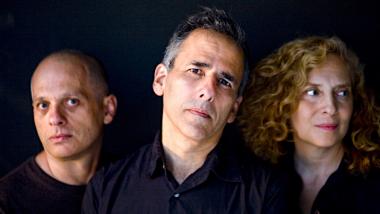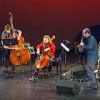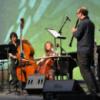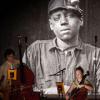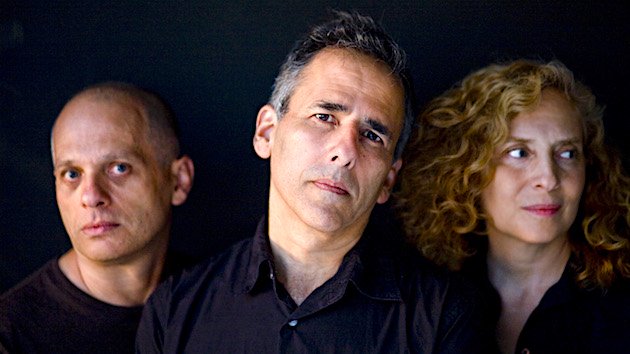
In May 1987, David Lang, Julia Wolfe, and Michael Gordon — three composers not long out of Yale University, in New York to kickstart their careers — decided to try mixing composition with entrepreneurship by presenting a 12-hour, new-music marathon at Exit Art, a gallery at Broadway and Prince Street, in SoHo.
There was the barest hint of enlightened self-interest in the plan: Each of the young composers would have a single work on the program. But they could hardly be accused of commandeering the spotlight. Their pieces would be nestled among music by 25 composers whose work fascinated them, including downtown legends like John Cage, Pauline Oliveros, and Phill Niblock, established minimalists and post-minimalists, like Steve Reich and Louis Andriessen, and younger composers like the genre-mixing iconoclasts John Zorn and John King, and relative newcomers like Aaron Kernis and Lois Vierk.
But though Lang, Wolfe and Gordon all wrote in a style that embraced the consonant, repetitive engine of Minimalism and the influences of rock and folk music, their program was by no means a downtown manifesto. Mixed in were works by old guard experimentalists like Milton Babbitt, George Crumb, and Iannis Xenakis, as well as the American premiere of Stravinsky’s keyboard arrangement of Agon. And two of the trio’s teachers at Yale, Jacob Druckman and Martin Bresnick, were represented.
To get this marathon going, the three composers did everything from choosing the works, corralling the performers and composers, to raising money, overseeing the advertising, selling tickets — and refreshments between sets — and cleaning the bathrooms after everyone went home. But they were encouraged by the support of the new-music community: Gordon got into a battle with John Cage at the door because Cage insisted on paying for his ticket, when Gordon thought he should attend for free. “It came to fisticuffs,” Gordon jokes now.
At the time, Lang, Wolfe, and Gordon were forming a loose collective of sorts, each pursuing separate composition careers, but also participating in collaborative projects. Mostly, though, they were friends (Gordon and Wolfe were married) who met every day to discuss their work, and to map out a utopian vision of a revitalized musical world.
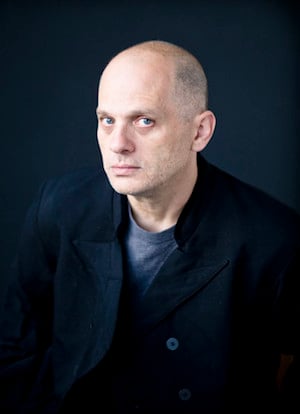
“We talked comprehensively about all the things that we wished were different in the world,” Lang says. “Some of that was about different ways music would get played, or different ways audiences would be approached. And we realized that if we were going to stay true to our ideas about solving these problems, we would have to do more things. We would have to start a school, we would have to start an ensemble — the problems for new music are so large that once you start pulling at the thread, saying ‘I’m going to fix this one thing,’ you realize that you have to fix the whole ecosystem. And gradually, we just decided that, in order to be more efficient, we wanted to take on as many of those things as we could.”
They already had a catchy name. When Lang received a grant for a concert at the Cooper-Hewitt Museum, in 1986, he brainstormed with Wolfe and Gordon about how to describe it. “Just say it’s a bunch of composers banging on cans,” Wolfe quipped, and Lang put her comment into the advertisement for the program. A year later, when they were tossing around names for their marathon, someone asked, “What about that ‘bang on a can’ thing?” and the name stuck — not only for the marathon, which was presented as the Bang on a Can Festival, but also for the collective itself.
Now celebrating its 30th anniversary, Bang on a Can has grown astonishingly — mainly by pursuing the list of dream projects they began compiling in the 1980s. And in the process, they instigated and nurtured a paradigm shift in the music world, addressing several of the issues they had targeted in their early discussions, and contributing to other trends already underway — including the primacy of chamber groups, especially those with unusual instrumentation, as incubators of fresh, adventurous ideas.
Most importantly, though, they played a role in making new music popular and appealing, rather than a repertory that musicians felt duty-bound to play, but were not enthusiastic about, and that audiences barely tolerated. Since that first marathon, and because of the efforts of Bang on a Can and like-minded musicians, like the Kronos Quartet, Icebreaker, Eighth Blackbird, and others, new music has become a growth industry within the classical music world.
Making New Music Cool Again
“You remember how depressing things used to be,” Gordon says, “when they’d have these concerts and nobody would come. That was the world we grew up in. Our teachers basically said, ‘No-one is going to play your music, no-one is interested in your music, no-one’s going to listen to your music.’ So I think that first concert was really us asking, ‘Is that really true?’ Maybe if it’s actually enjoyable — maybe if it’s in an art gallery and you don’t have to wear a jacket — it will be received in a different way.”
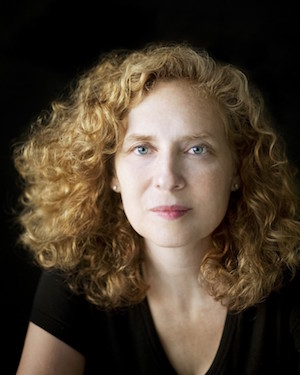
“Also,” Wolfe adds, “our musical backgrounds and our social worlds are very broad, so when we thought of our friends from college, they were going to see cool new films, or experimental dance companies — but they weren’t crossing the divide to see what we were doing. And that was curious to us, because we were having great experiences, and it wasn’t because we were music nerds, it was because they were amazing pieces.
“So, we wanted to know, how do we cross that divide? And one thing we did, at the very start, was when we wanted to let people know about the marathon, we bought mailing lists from Dance Theater Workshop. We bought the dance list, the theater list, the poetry list. We did not buy the music list. We specifically reached out to what we thought were curious, intellectual people who were interested in the arts. We thought about our audience from the very beginning, and we wanted it not to be an audience of specialists, but of people who thought, ‘Hey, this is a cool thing, let’s go hear it.’”
The first marathon led to two more before the Bang on a Can Festival expanded to four concerts, with the marathon — already a tradition — as the centerpiece. By then, the festival had moved to the R.A.P.P. Arts Center, a comfortably funky venue in the East Village, and soon its events were scattered among small spaces all over lower Manhattan.
In 1992, Lang, Wolfe, and Gordon ticked off another item on their list with the formation of a house band, the Bang on a Can All-Stars, which included a couple of players from the very first marathon — the bassist Robert Black and the multi-wind player and composer Evan Ziporyn — as well as other expert new-music players who had gravitated to the organization, including the cellist Maya Beiser, the pianist Lisa Moore, the percussionist Steven Schick, and Mark Stewart, a virtuoso electric guitarist with bona fides in the classical, jazz, and rock worlds.
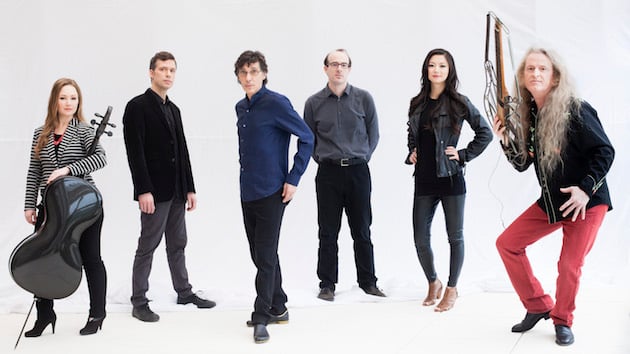
“We definitely wanted the electric guitar in there, that’s for sure,” Wolfe says. “But part of the motivation for forming the ensemble was that there was a buzz going on about Bang on a Can, and people would call us up and say, ‘You’ve got to do Bang on a Can in San Francisco,’ or “You’ve got to bring Bang on a Can to Amsterdam.’ And we’re thinking, it’s 20-plus composers and a lot of musicians — how do you export that? But forming a band gave us a vehicle for taking this esthetic on the road. And it was formed based on the spirit of those players — new music warriors like Robert Black, who’s been an incredible force in new music through the thinnest of times. Having had them play at the festival, it dawned on us to put them together as a band.”
“A lot of them,” Lang agreed, “were people we had come to depend on, people we called back year after year, because they were really dedicated, and we love them. So when we started the ensemble, we weren’t thinking, ‘Yes, this is the music of the future.’ It was really, these are people who are just like us, players who we could build something with.”
The ensemble’s makeup was also shaped partly by discussions with Beiser. “When we talked to her about putting this group together,” says Gordon, “she told us she didn’t want a high string instrument in the group. She was certain we wouldn’t find anybody that would be able to play in tune, to her taste, which is why we have cello and bass, but not violin.” To which Wolfe added, “The clarinet covers the high end, and the guitar and piano. Occasionally a triangle.”
The All-Stars’ roster has changed relatively infrequently in its 25 years. Beiser and Moore left to pursue solo careers, with Moore ceding her place to the pianist Vicky Chow, and Beiser replaced by Wendy Sutter, who was succeeded by Ashley Bathgate. Schick began devoting himself increasingly to conducting, and was succeeded by David Cossin, and Ziporyn turned over the woodwind duties to Ken Thomson.
Expanding Uptown
Shortly after the ensemble was founded, Bang on a Can accepted an invitation to leave the downtown haunts where the organization was spawned, and to present its eighth festival at Lincoln Center.
The move was not without problems, philosophical and otherwise. When I reviewed the All-Stars’ first Lincoln Center program for The New York Times — not a marathon, but a concert by the All-Stars, built of works by Gordon, Lang, Ziporyn, Tom Johnson, Eleanor Hovda, Mary Wright, Allison Cameron, and Frederic Rzewski — I began by noting, only partly tongue-in-cheek, that “professional worriers of all stripes are no doubt poring over the schedule of the eighth Bang on a Can series, searching for portents.”
More rigidly traditional critics, I continued, were already suggesting that “Lincoln Center’s adoption of the post-Minimalist downtown festival, with its informal atmosphere and its occasional nods to rock-and-roll, is a sign of Western civilization’s imminent collapse,” while new-music types who disdained Lincoln Center fretted that “Bang on a Can, having allowed itself to be absorbed by Lincoln Center, will surrender its quirkily omnivorous character and be sucked into the bland mainstream.” I concluded my review with the observation that “after their first dance, neither Lincoln Center nor Bang on a Can seemed any worse for the encounter.”
But in truth, my fears for the broader relationship between Lincoln Center and Bang on a Can were in line with those who thought the move would erode the festival’s independent character.
Having followed Bang on a Can from its earliest days, I loved the agreeably down-market, do-it-yourself informality of its concerts. At the marathons, you could immerse yourself in a parade of challenging, amusing, provocative, or boundary-trampling music until the wee hours of the morning. At the very least, I knew that this full-immersion aspect would be impossible — or at least, compromised — in Lincoln Center’s unionized houses, where costs increased precipitously after 11 p.m.
“There was a lot of philosophical discussion,” Wolfe recalls, “and it was interesting how people in different parts of the music world reacted. Some people saw Bang on a Can as a wonderful, precious thing, and wanted us to stay as we were. But the downtown composers really didn’t have an issue with it. If you talked to Glenn Branca, for example, he’d say, ‘I’m going to Lincoln Center!” And Annie Gosfield said ‘Get me on the three-sheet poster next to Plácido Domingo!’ Their feeling was, why shouldn’t this experimental music be treated as an icon of American culture? That said, there were some very complicated things about working in this very corporate structure.”
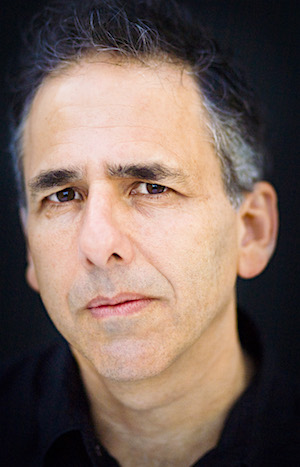
Among them, Gordon points out, was maintaining the longstanding policy of letting listeners come and go as they pleased, during the marathons. From Lincoln Center’s point of view, if someone left, there would be an empty seat that could be sold to someone waiting to get in. But that would mean that if the original ticketholders returned, there were no seats for them. The composers proposed setting up lawn chairs in the lobby of Alice Tully Hall, for listeners who wanted to take a break. For Lincoln Center, that idea was a non-starter.
“We had been a lot more casual when we were downtown,” Lang says. “But what we were doing was presenting the music we loved, and trying to build the world we wanted to live in. At the same time, a lot of people thought that Bang on a Can was a polemic, a challenge to the establishment, and a challenge to the institutions that were already there. And with the prospect of moving to Lincoln Center, we had to figure out, which of those things are we? Are we the pieces and composers we wanted to champion, or were we supposed to shake the institutions to their core? We had long discussions about that.
“What tipped it for me,” Lang continued, “was when I looked at Lincoln Center’s programming for that year, I saw that in the whole range of things they did, there were no women composers programmed, and no minority composers programmed. These were things we’d always been interested in bringing into our world, so what I started thinking was, if we didn’t go, those people would be completely unrepresented the following year. We had the opportunity to give these composers a place of respect in this palace of culture, and it seemed like this was a really necessary thing for us to do.”
In the end, Lincoln Center became less a headquarters for Bang on a Can than one of the many places the organization presented concerts in New York — the Winter Garden of the World Financial Center soon became its venue of choice for the marathon, and there were performances at the Brooklyn Academy of Music and elsewhere — just as New York was quickly joined by other cities on the Bang on a Can All-Stars’ touring map. But the shift uptown led to other changes behind the scenes, which helped Bang on a Can expand more rapidly.
“It was a gradual evolution,” as Wolfe remembers it. “For several years, the three of us did everything. We programmed the concerts, we chose the musicians, we sold the beer, we cleaned the bathrooms. And we were very proud of ourselves, raising all this money, which was all going to the artists. But then, at a certain point, one of our funders sat us down and said, ‘You’re going to burn out. You’re all active as artists — you’ve got to build some kind of structure.’ And we were, like, ‘structure? What is this word?’ We’re not business people, we don’t think like that. But we took it to heart, and hired a part-time person to help us. Now we have Kenny Savelson, as a managing director. We’re a four-person office, so we’re still pretty lean and mean.”
Read Part II here.

